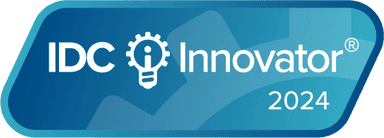ProductOct 13, 2025
Unlock Advanced Pricing and Data Sync in Salesforce: The Latest m3ter Salesforce Managed Package
The "Road to v1.0" is a multi-part series detailing the journey to version 1.0 of the m3ter Salesforce Managed Package (SMP). This is part 3.
The "Road to v1.0" is a multi-part series detailing the journey to version 1.0 of the m3ter Salesforce Managed Package (SMP). This is part 3.
At m3ter, our focus is on upgrading the monetization capabilities of B2B software companies. A key part of this mission is unifying the quote-to-cash stack by automating data flows between CRM and billing systems. Our reference architecture shows how these systems interconnect to create a modern monetization stack. Within this architecture our Salesforce Managed Package (SMP) plays a crucial role in this strategy, and we're excited to share our progress on the road to v1.0.
This is the third post in our "Road to v1.0" series exploring the journey of the m3ter Salesforce Managed Package. In our previous posts, we introduced the deep workflow integration capabilities and shared lessons learned from real customer implementations.
Now, we're excited to showcase the significant advancements in our latest release, which represents a major leap forward in pricing flexibility, data synchronization, and configurability. These capabilities bring advanced m3ter platform features directly into Salesforce, enabling more sophisticated pricing models and streamlined data management.
Advanced Pricing Segments in Salesforce: Granular Control for Complex B2B Models
The flagship feature in our latest release is comprehensive support for Pricing Segments. This capability brings m3ter's sophisticated segmentation model directly into Salesforce, enabling significantly more granular control over pricing and billing.
Segments allow you to define different pricing tiers, rates, or plans based on attributes like customer type, geographic location, product tier, or usage patterns. This is particularly valuable for businesses with diverse customer bases that require tailored pricing approaches whether you're pricing differently by region, differentiating enterprise from standard customers, or applying tiered pricing based on usage characteristics.
How it works:
In the m3ter Admin app, you'll find a dedicated Segments section using our updated horizontal navigation. Here, you can map segment attributes from your Salesforce objects to m3ter's pricing engine. For example, you might configure:
- Customer region to apply geographic pricing variations
- Account type to differentiate enterprise from standard pricing
- Product tier to enable tiered pricing models
- Environment type to price production vs. development usage differently
The setup follows the same intuitive pattern as our custom field mapping, using a straightforward UI to define which Salesforce fields should drive segment-based pricing in m3ter. The connector handles the transformation and passes these segment attributes to m3ter's pricing endpoint, where they're applied according to your configured pricing rules.
Visual clarity: The Sync Record component now displays visual indicators for mapped attributes—a dark blue icon for custom fields and a green icon for segments—making it immediately clear which attributes are being synchronized to m3ter.
Enhanced Data Sync: Two-Way Flow of Contracts, Fields, and Charges
Beyond segments, our latest release significantly expands what data can flow seamlessly between Salesforce and m3ter.
Automated Two-Way Sync for Contracts and Commitments
The connector now includes automated two-way synchronization for m3 Contracts and m3 Commitments. This ensures that contract and commitment data stays current across both platforms without manual intervention, reducing administrative overhead and eliminating sync delays that could impact customer-facing teams.
When combined with our Native Outbound integration, this creates a seamless flow of contract data that keeps Sales and Customer Success teams informed in real-time.
Custom Field Mapping
We've extended custom field support across m3ter entities including Accounts, Contracts, and AccountPlans. This capability allows organizations to synchronize business-specific data fields that matter to their unique workflows. Whether you're tracking custom attributes, regional information, or specialized business metrics, the connector can now map these fields seamlessly between systems.
m3ter Charges Support
The connector now supports mapping and synchronizing m3 Charges through the orchestrated sync. Charges in m3ter represent one-time fees, setup costs, or other non-recurring billing items that need to be associated with customer accounts.
The Charge mapping follows the same configuration pattern as other entities like AccountPlan, providing a consistent experience across the connector. This means your teams can now manage the complete lifecycle of customer billing from recurring usage-based charges to one-time fees entirely within their Salesforce workflows.
Automated Reference Data Management in Salesforce
Managing reference data across systems can be tedious and error-prone. Our latest release introduces the ability to load reference data directly from your configured m3ter Organization into Salesforce. This feature currently supports:
- Transaction Types - ensuring consistency in how balance adjustments are categorized
- Currency codes - maintaining accurate currency definitions across systems
- Product codes - synchronizing your product catalog
The reference data capability is accessible through a dedicated tab in the m3ter Admin app. When data is created or updated in m3ter, changes automatically synchronize to your Salesforce organization. This reduces manual data entry, eliminates discrepancies, and ensures your teams are always working with current reference information.
Important note: If reference data is deleted in m3ter, it remains in Salesforce and requires manual deletion by a Salesforce administrator. This design decision prioritizes data integrity—reference data may already be used by existing entities in Salesforce, and automatically deleting it could create referential integrity issues.
Timezone Accuracy for Global Salesforce Teams
A subtle but important enhancement addresses timezone handling across the connector. For date fields in m3ter Objects and end-dating operations, time calculations now use the timezone configured in your m3ter Organization settings. To reduce confusion and improve transparency, the timezone is now displayed directly in Salesforce within the Setup area of the m3ter Admin app.
This eliminates a common source of confusion for global teams operating across multiple timezones, ensuring dates and times are interpreted consistently.
Design Principles: Flexibility with Consistency
These capabilities reflect a clear pattern in how we're building the connector. Each feature follows consistent design principles:
- Metadata-driven configuration that adapts to your Salesforce implementation rather than requiring you to adapt to ours.
- UI-based setup in the m3ter Admin app that shields users from complex metadata configurations.
- Visual feedback through icons and indicators that make it clear what data is being synchronized and how.
- Bidirectional sync where appropriate, ensuring data flows seamlessly in both directions.
This consistency means that as you adopt new features, the learning curve remains minimal. If you've configured custom field mapping, you already understand how to configure segment mapping. If you've set up synchronization for one entity type, you know how to set it up for others.
Real-World Impact
These enhancements directly address feedback from our customer implementations. Organizations using the connector have told us they need:
- More pricing flexibility to support complex, segment-based pricing models that reflect their diverse customer base
- Reduced manual work through automated synchronization of contracts, commitments, and reference data
- Better visibility into what data is being synchronized and how it's being used
- Consistent configuration patterns that reduce training time and implementation complexity
Our latest release delivers on all of these requirements while maintaining the reliability and ease of use that have characterized the connector from the start.
Looking Ahead
As we continue toward v1.0, we remain focused on feature parity with the m3ter platform and expanding integration pathways to support the diverse ways our customers have customized Salesforce. Each release brings us closer to a complete, bidirectional integration that makes usage-based billing feel native to Salesforce.
The connector has evolved from enabling basic data synchronization to supporting sophisticated pricing models, automated workflows, and comprehensive data management. We're excited to see how customers leverage these capabilities to accelerate their usage-based billing initiatives.
Getting Started
If you're already using the m3ter Connector for Salesforce and want to explore these new capabilities, please reach out to m3ter Support or your m3ter contact who can assist with upgrading and implementation.
For organizations evaluating the connector, these latest capabilities demonstrate our commitment to bringing the full power of m3ter's billing platform into Salesforce, where your teams are already working.
Ready to explore advanced pricing models in Salesforce? Explore the docs or schedule a demo to see the m3ter Connector in action.
Visit the m3ter Salesforce AppExchange listing here.
You might also like…
Subscribe to Counting Tokens
Actionable insights on AI revenue, billing, and finance.
Ready to upgrade your monetization stack?
See a demo, get answers to your questions, and learn our best practices.
Schedule a demo


